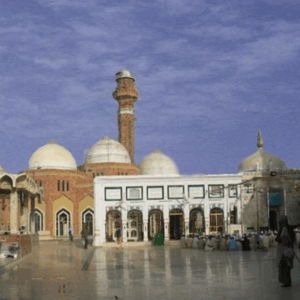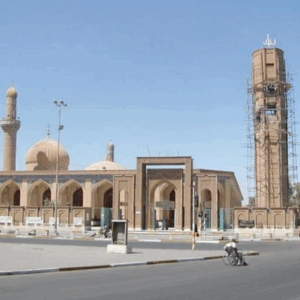The Islamic Golden Age: A Beacon of Knowledge and Discovery
The Islamic Golden Age, which stretched from the 8th to the 14th centuries, was a remarkable era of cultural, scientific, and intellectual brilliance in the Muslim world. Imagine walking through the lively streets of Baghdad, where scholars, philosophers, physicians, astronomers, and inventors gathered to share ideas and push the boundaries of human knowledge. This period became the foundation for many modern sciences, including mathematics, medicine, chemistry, and astronomy.
Some defining features of this golden era include:
-
Thriving Centers of Learning: Cities such as Baghdad, Cordoba, and Cairo became hubs of study and innovation.
-
Cultural Exchange: People from different cultures and languages met, debated, translated, and collaborated.
-
Preservation of Knowledge: Ancient Greek, Roman, Persian, and Indian texts were translated, studied, and expanded upon—helping preserve them for future generations.
The Contributions of Muslim Scientists
Muslim scholars played a major role in shaping the scientific world. Their discoveries not only advanced their own societies, but also greatly influenced the European Renaissance centuries later. Many fields of study as we know them today owe their foundations to these brilliant minds.
Some of the most influential figures include:
-
Al-Khwarizmi: Founder of algebra
-
Ibn Sina (Avicenna): Master physician and philosopher
-
Al-Biruni: Expert in astronomy, anthropology, and cultural studies
Their work reflects the spirit of curiosity, innovation, and discovery that defined the Islamic Golden Age.
Al-Khwarizmi: The Father of Algebra
A Look into His Life and Achievements
Among the shining intellectuals of the Golden Age was Al-Khwarizmi, born around 780 AD in Persia. He became one of the key scholars in Baghdad’s renowned House of Wisdom, a major research center of the time. His most famous book, Al-Kitab al-Mukhtasar fi Hisab al-Jabr wal-Muqabala, introduced the world to algebra—a word derived from “al-jabr.”
Key facts about Al-Khwarizmi:
-
He established systematic methods for solving linear and quadratic equations.
-
His works were translated into Latin and later shaped European mathematics.
His Lasting Impact on Mathematics
Al-Khwarizmi revolutionized how problems were solved. His logical, step-by-step approach encouraged analytical thinking—something we still value in modern mathematics.
His influence includes:
-
The introduction of the words “algebra” and “algorithm.”
-
Inspiring mathematical thought across cultures and generations.
Al-Khwarizmi’s work laid the foundation for subjects like engineering, economics, computer science, and more.
Ibn Sina: The Persian Polymath
His Wide-Ranging Contributions
Next we meet Ibn Sina, known in the West as Avicenna. Born in 980 AD, he was a brilliant philosopher, physician, and scientist. His masterpiece, “The Canon of Medicine,” remained a standard medical textbook for centuries.
Highlights of Ibn Sina’s career:
-
He blended Islamic theology with Aristotelian philosophy.
-
He stressed the importance of observation, experimentation, and logic.
His Influence on Medicine and Philosophy
Ibn Sina is best known for transforming medical science. His impact includes:
-
Introducing clinical diagnosis and detailed patient examinations.
-
Supporting a holistic approach—treating both body and mind.
His philosophical writings deeply influenced later Muslim and European scholars, including Thomas Aquinas. Ibn Sina remains one of history’s most celebrated intellectuals.
Al-Biruni: The Master Scholar and Indologist
His Broad Studies
Another towering figure was Al-Biruni, born in 973 AD. His curiosity knew no limits—he studied mathematics, astronomy, geography, geology, anthropology, and more. His journey to India allowed him to engage deeply with Indian culture, philosophy, and science.
Key highlights:
-
He learned Sanskrit to directly study Indian works.
-
His famous book “Tahqiq ma li’l-Hind” documented Indian customs, religions, and sciences.
His Achievements in Astronomy and Anthropology
Al-Biruni made groundbreaking contributions:
-
He estimated the Earth’s radius with remarkable accuracy.
-
He created precise astronomical tables.
-
He analyzed cultures with respect and objectivity, becoming one of the earliest anthropologists.
His work shows the value of open-mindedness and cross-cultural learning.
Alhazen (Ibn al-Haytham): Pioneer of Optics
His Impact on the Science of Light
Born in 965 AD, Alhazen transformed the field of optics. His influential book, “The Book of Optics,” changed how humanity understood light, vision, and perception.
His major ideas included:
-
Light travels in straight lines.
-
Vision occurs when light enters the eye, not when the eye emits rays.
His Experiments and Discoveries
Alhazen was a true experimental scientist. His contributions include:
-
Studying refraction and how light bends through different materials.
-
Designing the camera obscura, a precursor to the modern camera.
His scientific method—based on observation, testing, and proof—became the foundation for modern science.
Jabir ibn Hayyan: The Father of Chemistry
His Innovations in Chemistry
Jabir ibn Hayyan, born around 721 AD, is widely regarded as the founder of modern chemistry. His approach blended theory with hands-on experimentation.
Key achievements:
-
Emphasized experimentation as the heart of scientific discovery.
-
Discovered important substances such as nitric acid and hydrochloric acid.
His Alchemical Contributions
His many writings, including “Kitab al-Kimya,” introduced:
-
New instruments and techniques such as distillation tools.
-
Systematic methods that shaped the evolution of chemistry.
His legacy continues to influence laboratory science today.
Al-Idrisi: The Great Cartographer and Geographer
His Mapping Achievements
Born in 1100 AD, Al-Idrisi became one of the greatest geographers in history. His world map, the “Tabula Rogeriana,” was commissioned by King Roger II of Sicily and stood as the most accurate map of the medieval world.
Key contributions:
-
Highly detailed maps and geographical descriptions.
-
A blend of Greek, Roman, and Islamic geographical knowledge.
His Influence on Geography
Al-Idrisi transformed map-making by:
-
Introducing more accurate world projections.
-
Enhancing navigation and global exploration.
-
Encouraging knowledge exchange between the Islamic world and Europe.
His maps were used by explorers for centuries.
Conclusion: The Lasting Legacy of Muslim Scientists
The Islamic Golden Age gave rise to some of history’s most extraordinary thinkers—people like Al-Khwarizmi, Ibn Sina, Al-Biruni, Alhazen, and many more. Their work laid the foundations for countless modern sciences and technologies.
Their legacy teaches us:
-
Science grows through curiosity and collaboration.
-
Knowledge thrives when cultures learn from one another.
-
Innovation requires courage, creativity, and open-mindedness.
Even today, the discoveries of these Muslim scholars continue to influence medicine, mathematics, astronomy, engineering, and philosophy. Their achievements remind us that the pursuit of knowledge is a timeless journey—one that connects past, present, and future generations.




